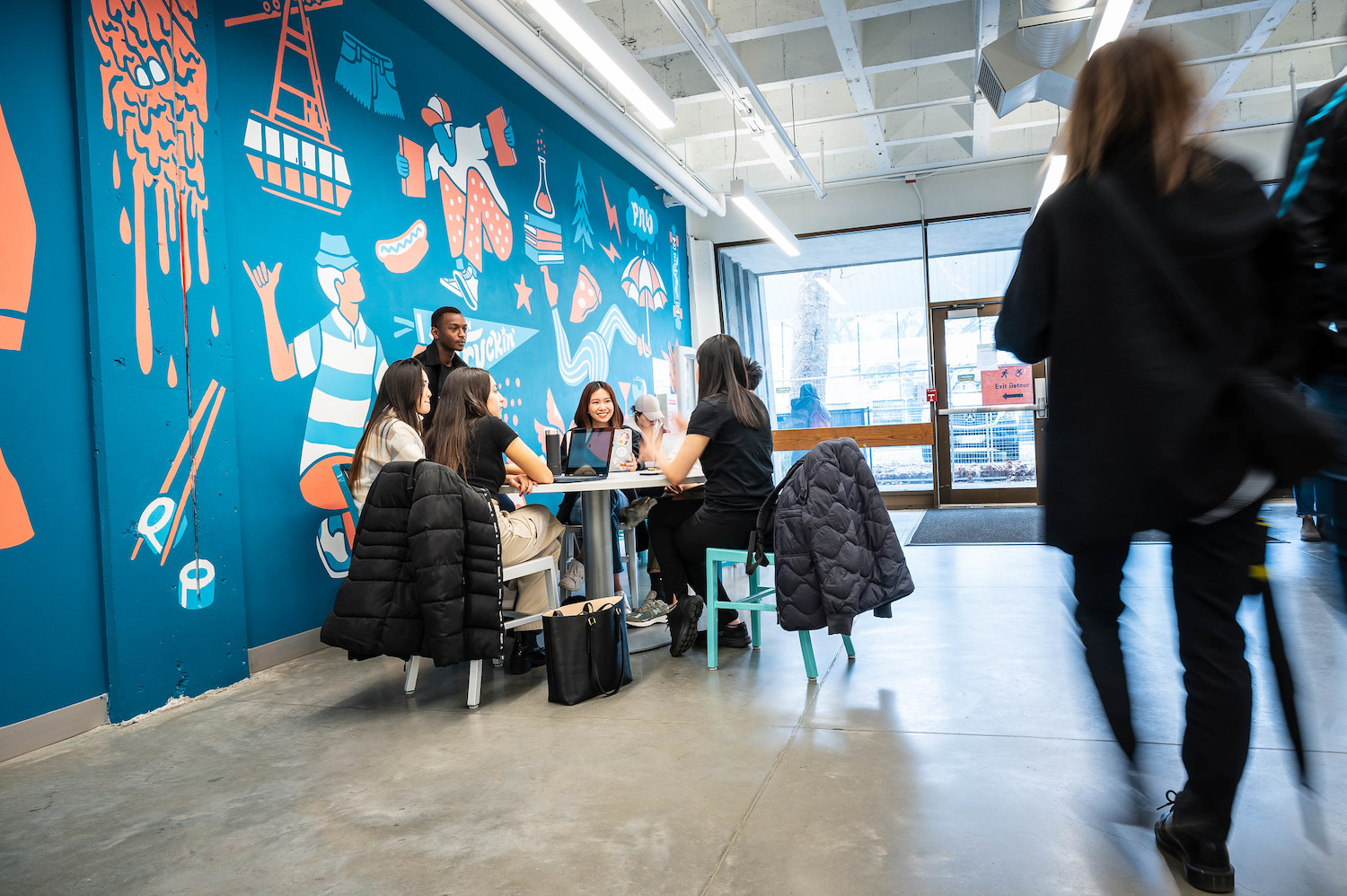How the international student cap affects immigration to Canada
We spoke to Dr. Lisa Brunner, a postdoctoral fellow at UBC’s Centre for Migration Studies, who studies the links between international migration and education.

Photo credit: Paul Joseph / UBC Brand & Marketing

The Canadian federal government has announced for the first time a cap on the number of international student study permits.
Dr. Lisa Brunner, a postdoctoral research fellow at UBC’s Centre for Migration Studies, studies the links between international migration and education. Her doctoral dissertation at UBC focussed on the recruitment of international students as immigrants, and how, in some contexts, that has shifted the role of higher education in society. We spoke to her about her research and how the reduction in international student numbers will likely impact Canada.
What role do international students play in Canada?
Canadian higher education is deeply dependent on international student tuition, which is, on average, over five times higher than domestic tuition at the undergraduate level. Universities disproportionately rely on international PhD students’ specialized research and teaching skills.
Canada also relies heavily on temporary foreign workers and immigrants, and international students make up a growing proportion of both. Roughly half of these students remain in Canada after graduation to work, and the majority who stay eventually become permanent residents.
Your PhD dissertation focused on the recruitment of international students as immigrants, or “edugration.” How did higher education become intertwined with Canadian immigration policy?
Canada used to recruit immigrants through ‘one-step’ immigration – that is, by selecting them directly from abroad. Over the past 20 years, however, Canada increasingly selected immigrants from a pool of temporary foreign workers already living in Canada, such as international graduates holding post-graduation work permits. Governments prefer these “two-step” immigrants because they tend to have better long-term earnings.
Edugration refers to a specific form of two-step immigration targeting international students, who are seen as ideal immigrants due to their relatively young age, official-language abilities, and high skill levels. It started in the 2000s, when international students became eligible to work while studying, obtain post-graduation work permits, and, for some, become permanent residents.
Edugration relies on post-secondary institutions to recruit international students, which they have done since the 1980s and 1990s in response to stagnant or decreasing funding, domestic tuition caps and expanding missions. In a competitive global education market, the promise of permanent residency became a selling point of Canadian higher education and was reinforced by virtually every stakeholder, including Immigration, Refugees and Citizenship Canada (IRCC) and Global Affairs Canada. This marketized higher education and shifted the role of post-secondary institutions, which now essentially screen and train future Canadians.
Why has a cap on international students been introduced? What impact will this have on immigration to Canada?
What is happening in Canada now is similar to what unfolded in Australia. There, international enrollments mushroomed in certain vocational programs, distorting the labour market and producing “not-so-ideal” immigrants in the government’s eyes. International students became targets of abuse, and Australia faced diplomatic and reputational consequences.
In Canada, the number of international students rose quickly over the past decade, especially at the college level. Institutions were not consistently regulated. Some marketed permanent residency while failing to provide adequate education. Less-selective institutions issued so many admission letters that IRCC could not manage the volume of study permit applications. And although Canada mitigated labour shortages during and post-COVID-19 by incentivizing international students to work, concentrations in certain industries such as accommodation and food services had ripple effects.
Another issue is Canada’s stressed infrastructure. Canada’s housing crisis, for example, is complex and not due to any one factor. International students are just one portion of Canada’s population growth. But public support for international students is low, which could be why IRCC linked them to housing. IRCC hopes the cap system will more evenly distribute international students across the country.
The cap does not apply to master’s and doctoral programs, and the federal and provincial governments will likely continue to target those graduates as “ideal” immigrants. But the idea that all international students are “ideal” has shifted. With immigration, there is a trade-off between meeting short-term labour market demands and long-term economic goals. The international student program shows IRCC’s difficulty getting that balance right.
What impact will a cap on international students have on Canadian higher education?
Short-term, the impacts will be uneven, both geographically and among institutions. Ontario and B.C. will see the biggest drops in international enrolments. Both have promised to better regulate the higher education sector, but the real question is how they will deal with decreased revenue. They might increase higher education funding, for example, but they could also remove domestic tuition caps. Institutions could raise international student tuition, double-down on lucrative professional master’s programs, or shut down unprofitable programs. Many institutions, especially private colleges, will close altogether.
Long-term, a lot is at stake. We face a reckoning. Do we, as a society, value higher education? If yes, are we willing to fund it ourselves?
How will these measures affect international students?
As temporary residents, international students are vulnerable to exploitation yet have limited recourse and political representation. They have long been used as a solution to a multitude of Canada’s public policy problems. But international students are not just numbers. They are people taking big risks at the start of their adult lives. Just like any student, they are trying to plan their futures while navigating a complex, inequitable world.



